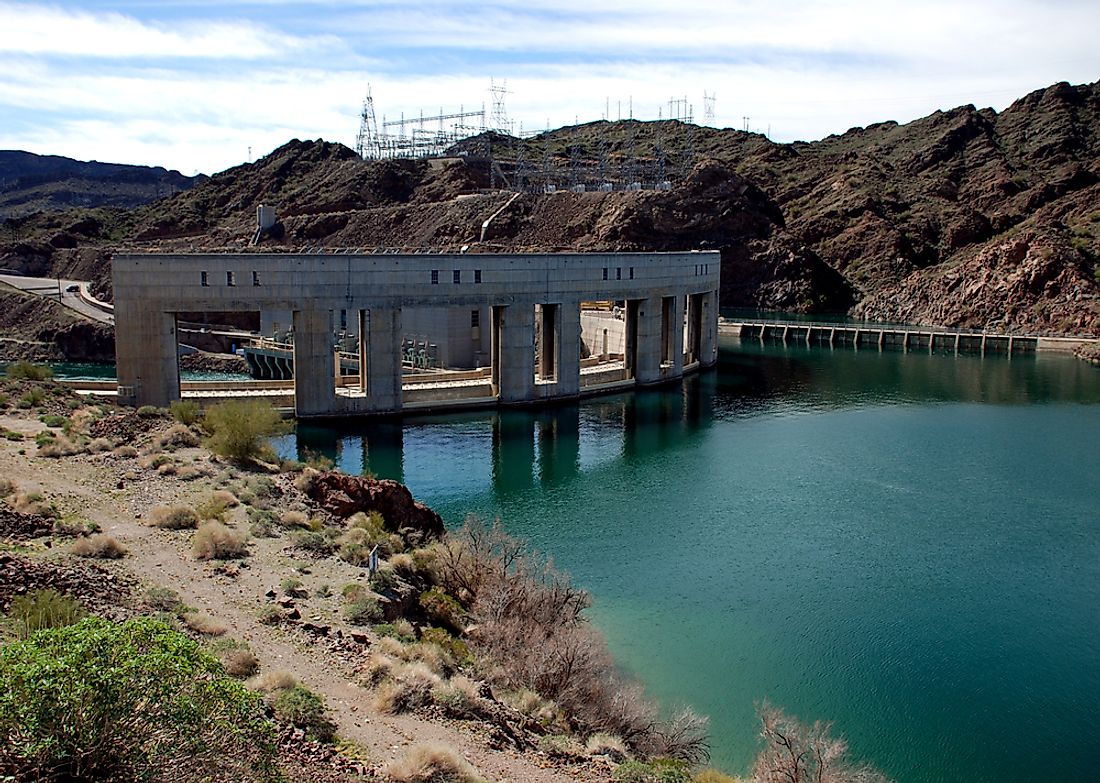How Many Dams Are There On The Colorado River?

Colorado River is one of the major North American rivers which originates from the Rocky Mountains and flows for 1,450 miles to the Gulf of California. The river drains an area of about 246,000 sq miles in 2 Mexican states and 7 US states. Over 238,600 sq miles of its drainage basin is in the United States. It has one of the most developed river systems in the world. The primary stem of the Colorado River has 15 dams while its tributaries have hundreds more. The dams can hold over four times the river’s annual flow and supply municipality and irrigation water while generating hydroelectricity.
Main Dams Along the Colorado River
Parker Dam
Parker Dam is an arched dam which crosses the river about 155 miles downstream of the Hoover Dam. The Bureau of Reclamation finished building the 320 ft high dam in 1938, and it is the deepest dam on earth. Parker Dam serves as a reservoir and a hydroelectric power generation site with a capacity of 120 Megawatts. The reservoir enclosed by Parker Dam is known as Lake Havasu, and it can store over 210 billion gallons of water. 73% of the dam’s 320 ft structure is beneath the riverbed. The Colorado River Aqueduct, which gets its water from Lake Havasu, supplies water to all the cities in the Californian counties of San Diego, San Bernardino, and Los Angeles.
Hoover Dam
The Hoover Dam is an arched dam situated in the Black Canyon which is on the Nevada-Arizona border. The Hoover Dam was built from 1931 to 1936 during the great American Depression. At the time of its completion in 1935, Hoover Dam was then the largest dam in the world. Previously referred to as the Boulder Dam, it was renamed in 1947 to Hoover Dam after President Hoover, the thirty-first American president. The reservoir enclosed by the Hoover Dam is called Lake Mead, and it is the largest reservoir by volume in the country. It is situated near the Boulder City in Clark County. The dam’s generator provides enough power for both the private and public sector in Arizona, Nevada, and California. It is also a major tourist attraction with over a million people touring it every year.
Glen Canyon Dam
Glen Canyon Dam is an arched dam which is situated on the Colorado River in the northern parts of Arizona next to Page town. The 710 ft dam was constructed by the Bureau of Reclamation from 1956 to 1966, creating one of the biggest reservoirs in the country known as Lake Powell. Lake Powell was named after John Powell, the man who led the first expedition through the Grand Canyon using a boat. The dam was named after the chain of sandstone gorges which are currently filled by the reservoir known as the Glen Canyon.
Grand Valley Diversion Dam
Water is diverted water from Colorado River into the Highline Canal for irrigation purposes by the Grand Valley Diversion Dam. It is a 14 ft high, and 546 ft long diversion dam which has six large gates. The Bureau of Reclamation started building the concrete roller dam in 1913. The dam operates a small hydroelectric power plant which was completed in 1933 and has a potential of generating about 3000 kilowatts. It also irrigates over 8,600 acres in Grand Valley.
Course of the Colorado River
The Colorado River begins in the Rocky Mountain National Park in northern Colorado before crossing the Colorado Plateau and flowing into Utah. From there, the river enters Arizona were it famously flows through the Grand Canyon. The river forms the border between Arizona and Nevada as well as between Nevada and California before crossing into Mexico. The river forms the border between the Mexican states of Baja California and Sonora before draining into the Gulf of California.











